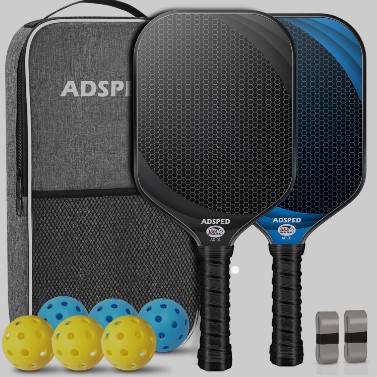Pickleball has become one of the fastest-growing sports in the world, and with its increasing popularity comes a demand for more innovative equipment. One of the areas where innovation is constantly being explored is through pickleball paddle materials.
Traditionally, pickleball paddles UD plate have been made with materials such as wood, aluminum, and composite materials. However, in recent years, two new materials have emerged as the top contenders for pickleball paddle construction: UD plates and UD carbon fiber.
But what exactly are UD plates and UD carbon fiber? And how do they compare to traditional materials used for pickleball paddles? In this article, we will dive into the world of pickleball paddle materials and explore the differences between UD plates and UD carbon fiber.
What are UD Plates?
UD stands for Unidirectional, which refers to a type of carbon fiber material that is made up of long continuous fibers that run in one direction. These fibers are then layered together, with each layer having its own orientation, to create what is known as UD plates.
UD plates are known for their exceptional strength, stiffness, and light weight. They are commonly used in the aerospace and automotive industries due to their high-performance qualities.
What is UD Carbon Fiber?
UD carbon fiber is a type of carbon fiber material that has been treated with a unidirectional finish. This finish allows the fibers to be aligned in one direction, providing maximum strength and stiffness.
UD carbon fiber is also known for its lightweight properties and is used in the construction of high-performance sports equipment, including pickleball paddles.
UD Plates vs. UD Carbon Fiber: Strength
One of the main advantages of both UD plates and UD carbon fiber is their incredible strength. Due to their unidirectional fibers, these materials are able to withstand high impact and stress, making them ideal for use in sports equipment.
However, when comparing UD plates and UD carbon fiber, it is important to note that while both materials have exceptional strength, UD plates tend to be slightly stronger due to the orientation of their fibers. This makes them a popular choice among athletes looking for maximum power in their pickleball paddles.
UD Plates vs. UD Carbon Fiber: Weight
Another important aspect to consider when looking at pickleball paddle materials is weight. A lighter paddle can provide better control and maneuverability, which are crucial in the fast-paced game of pickleball.
Both UD plates and UD carbon fiber are known for their lightweight properties, but it has been found that UD plates tend to be slightly lighter than UD carbon fiber. This can make a significant difference in performance for players who prefer a lighter paddle.
UD Plates vs. UD Carbon Fiber: Durability
When it comes to durability, both UD plates and UD carbon fiber stand out for their ability to endure wear and tear over prolonged periods. UD plates, with their multiple layers of unidirectional fibers, offer exceptional resistance to impact and bending. Similarly, UD carbon fiber’s unidirectional alignment ensures long-lasting performance and resilience against fractures. However, some players have noted that UD carbon fiber can display slight weaknesses in extreme conditions, potentially impacting its longevity compared to UD plates.
UD Plates vs. UD Carbon Fiber: Cost
Cost is always a significant factor when choosing pickleball paddles, especially for players who intend to invest in high-quality equipment. Generally, paddles made with UD plates tend to be more expensive due to the intricate layering process and the higher-grade materials used. On the other hand, UD carbon fiber paddles, while still a premium option, often come at a slightly lower price point. For players who want the best performance without breaking the bank, UD carbon fiber can be a cost-effective yet high-performing alternative.
Conclusion
Traditional materials like wood and aluminum are commonly used in pickleball paddles, but UD plates and UD pickleball paddles UD carbon fiber are introducing a new era of innovation. These materials offer excellent strength and are lightweight, with UD plates being slightly preferred by pros for their superior strength and weight properties. As pickleball grows, these advanced materials are expected to lead to innovative paddle designs, enhancing performance for players of all levels.
